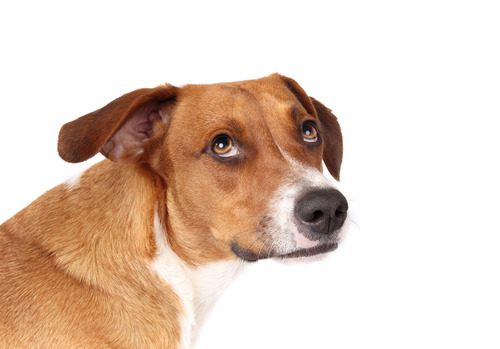Dog Swallowed a Sock: What Your Next Steps Are
When your dog swallows a sock, it can be a stressful and confusing experience. You might wonder what steps you should take to ensure your pet’s safety and well-being. At Keystone Animal Hospital in Bradenton, FL, we understand how much you care for your dog. We’re here to provide you with essential information on what to do if your dog has swallowed a sock. Call us today at (941) 741-8445 if you need immediate assistance.

Immediate Actions to Take
Assess the Situation
The first thing you should do is assess the situation calmly. Try to determine when your dog swallowed the sock and observe their behavior. Are they acting normal, or do they seem distressed? If your dog appears to be in pain, vomiting, or showing signs of distress, it’s important to seek veterinary help immediately. Call Keystone Animal Hospital at (941) 741-8445 for guidance.
Do Not Induce Vomiting
It might seem like a good idea to make your dog vomit to expel the sock, but this can be dangerous. Inducing vomiting can cause the sock to get stuck in the esophagus, leading to further complications. Always consult with a veterinarian before taking any action.
Monitor Your Dog
If your dog seems to be acting normal, monitor them closely for any changes in behavior or symptoms. Keep an eye out for signs such as:
- Vomiting
- Lack of appetite
- Lethargy
- Abdominal pain
- Difficulty passing stool
If you notice any of these symptoms, contact us at Keystone Animal Hospital immediately.
When to Seek Veterinary Help
An intestinal blockage is a serious condition that requires prompt veterinary attention. Symptoms to watch for include:
- Persistent vomiting
- Severe abdominal pain
- Inability to pass stool
- Bloated abdomen
- Weakness and lethargy
If you observe any of these signs, bring your dog to Keystone Animal Hospital right away. Timely intervention can prevent further complications and ensure your pet’s safety.
Professional Examination
A professional examination is crucial to determine the extent of the problem. Our veterinarians at Keystone Animal Hospital will perform a thorough check-up, including a physical examination, X-rays or ultrasound, and blood tests. These diagnostic tools help us understand where the sock is located and decide the best course of action for your dog.
Treatment Options
Non-Surgical Methods
In some cases, if the sock has not caused a blockage and is still in the stomach, non-surgical methods might be an option. Your veterinarian might use an endoscope to retrieve the sock, a minimally invasive procedure that involves inserting a small camera into your dog’s stomach to locate and remove the sock.
Surgical Intervention
If the sock has moved into the intestines and caused a blockage, surgery might be necessary. This is a more invasive procedure but is often the best way to remove the sock and prevent further complications. Our experienced veterinary team at Keystone Animal Hospital is equipped to handle such surgeries with the utmost care and expertise.
Post-Treatment Care
Monitoring and Recovery
After the sock has been removed, whether through non-surgical or surgical methods, your dog will need close monitoring during the recovery period. Follow your veterinarian’s instructions carefully to ensure a smooth recovery. This might include:
- Administering prescribed medications
- Providing a special diet
- Limiting physical activity
Regular follow-up visits to Keystone Animal Hospital will help us monitor your dog’s progress and address any concerns that may arise.
Preventing Future Incidents
Preventing your dog from swallowing foreign objects in the future is crucial for their health. Here are some tips to help prevent such incidents:
- Keep socks and other small objects out of your dog’s reach
- Provide plenty of chew toys and engage in interactive play to keep them occupied
- Train your dog with commands like “leave it” or “drop it” to prevent them from picking up inappropriate items
Understanding the Risks
Swallowing a sock can lead to various complications, such as:
- Intestinal perforation
- Severe infections
- Chronic digestive issues
Understanding these risks underscores the importance of seeking prompt veterinary care if your dog swallows a sock. The sooner we can intervene, the better the outcome for your pet.
Long-Term Health Monitoring
Even after the immediate danger has passed, it’s essential to keep an eye on your dog’s long-term health. Regular check-ups at Keystone Animal Hospital can help detect any lingering issues early and ensure your dog remains healthy and happy.
Keeping Your Dog Safe and Healthy
If your dog has swallowed a sock, it’s important to remain calm and take the appropriate steps to ensure their safety. At Keystone Animal Hospital in Bradenton, FL, we are here to help you navigate this stressful situation. Our team of experienced veterinarians is ready to provide the care and attention your dog needs. For any concerns or immediate assistance, call us today at (941) 741-8445. Your pet’s health and well-being are our primary focus, and we are dedicated to providing the best care possible.
